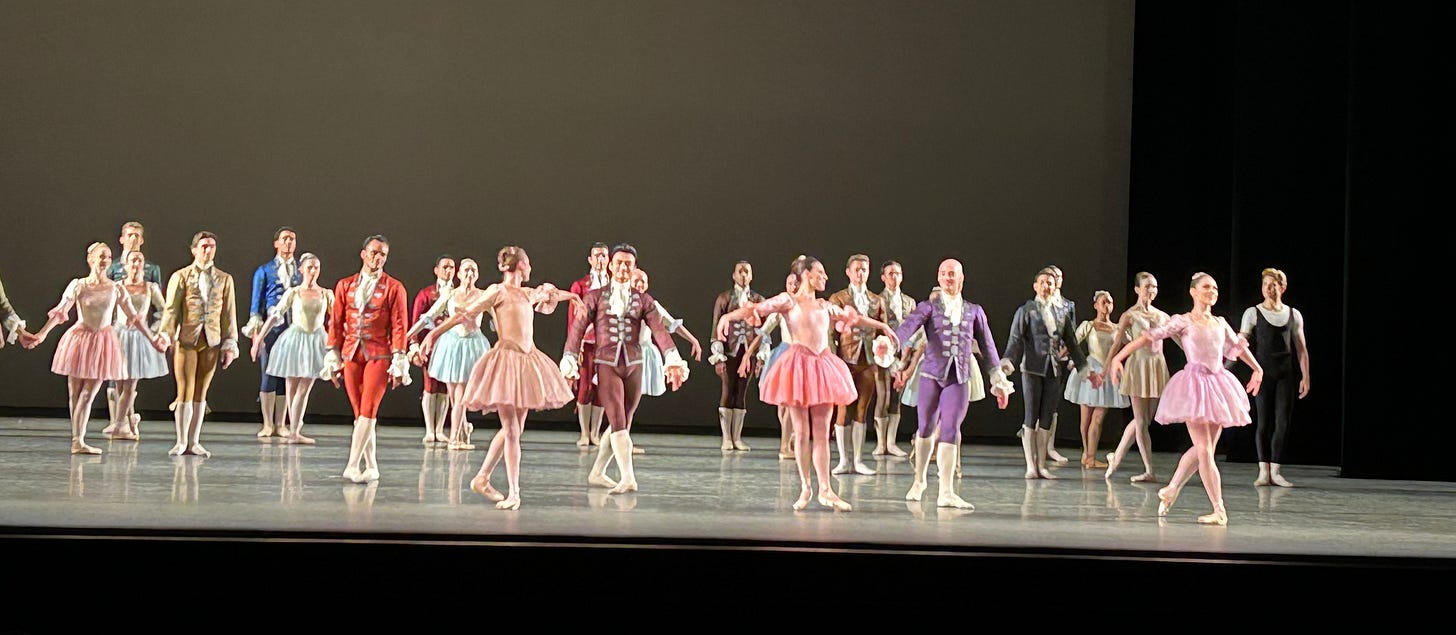Infinite Variations
Jerome Robbins's interpretation of "The Goldberg Variations" returns to New York City Ballet
The theme-and-variations form is the most exploratory structure in music. A composer takes a theme—a single, often simple idea—and then spins it, turns it upside down, takes it apart, puts it back together, speeds it up, slows it down, doubles it, cuts it in half, layers it, and does whatever else comes into his or her head. The most satisfying ones, like Bach’s Goldberg Variations, make you feel as if every possible option and idea has been explored, and that an entire complex world has been spun out of just a few building blocks. The miraculous thing about Jerome Robbins’s ballet to The Goldberg Variations is that it, too, feels inexhaustible. It’s clear that Robbins drew strength and courage from Bach’s endless musical ideas. (The Variations were played beautifully, with ringing presence and wonderful shadings by the pianist William Wolfram.) Only once, during the Sept. 30 performance of Goldberg at New York City Ballet, did the thought cross my mind that Robbins’s invention had flagged. The moment quickly passed. Like Bach, Robbins tried everything under the sun: canons, fugues, moments of unison in which the dancers then spin off and do their own thing. A kind of re-enactment of ballet class, in which a “teacher” shows and the “students” imitate, only for the roles to be reversed. Men partnering men, women partnering women; two men partnering a single woman. A quiet duet in which two men simply stretch on the floor. Nods to Balanchine (the four boys from Agon, a phrase from Theme and Variations, a little bit of Orpheus). Lots and lots of walking steps. Folk steps. Backward-moving steps. And then, in the second, grander section, a slow-motion pas de deux, and another in which Robbins finally acquiesces to the audience’s desire for showy steps like fouetté turns and grand pirouettes à la seconde. By then, you feel they’ve earned the right to show off. They are the fireworks at Versailles, the fin de fiesta. The ballet ends in a diagonal formation, with all the dancers facing the piano, like the characters in Balanchine’s Liebeslieder. It’s a party, and music is what has brought everyone together, on and offstage.
Dancers: Christina Clark, Alec Knight Ashley Hod, Emma Von Enck, Dabid Gabriel, Jules Mabie, Sebastián Villarini-Vélez, Andres Zuniga, Ashley Laracey, Isabella LaFreniere, Tiler Peck, Taylor Stanley, Tyler Angle, Chun Wai Chan (plus corps).


